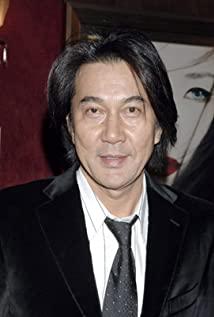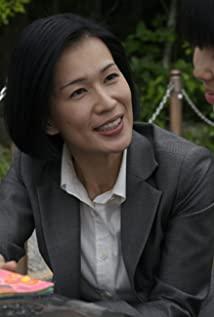The film "Eel", as the second Cannes Palme d'Or work by Masahira Imamura, maintains his usual film style: desire, eroticism, and violence. The gentle narrative, the real cut-through, and the use of surreal techniques make the film express the theme of salvation vividly. Yamashita Takuro killed people because of jealousy and rage, Hattori Katsura committed suicide because of lust, Takada's gluttony, Takasaki's jealousy, arrogance and laziness, and Dojima's greed. These all confirm the evil deeds listed by the Dominican priest St. Domís Aquinas in the 13th century. The difference from American Hollywood director David Fincher's "The Seven Deadly Sins" is that "The Eel" is more down-to-earth instead of being cryptic. The absence of those commercial elements also expresses the meaning of the Seven Deadly Sins more profoundly. At the beginning of the film, the life environment of Takuro Yamashita was shown with the lens. The director intends to put Takuro Yamashita in a large environment to make him universal, using depth-of-field lens scheduling to show the real life conditions of people from all walks of life in Japan. Use the image of an eel to express the unity of humans and animals.
The title of the movie appeared at 14 minutes and 33 seconds. This is a very regular way. The title appears after the film has explained the background and completed the first narrative, taking into account the audience's experience of watching the movie. The film’s narrative method is positive narrative, but in order to make up for the incomplete narrative, the director added a dream (Katsuko Hattori’s dream) method to make the story narrative more complete.
The name of the film is "Eel". At first glance, the title is talking about fish, but in fact it is talking about people. In the movie, the eel is an image that merges with Takuro Yamashita. Yamashita Takuro said when talking about eels to others: "It can understand me, and it doesn't talk too much." Eels are his reason to escape from life, and the phrase "it doesn't talk too much" is an allusion. It was discovered that his wife’s affairs were due to other people's talk, and he was making excuses for his jealousy. The eel being kept in the fish tank also alluded to the life situation of Yamashita Takuro, even if he left the prison, he was under surveillance. The eel lays eggs near the equator with a child who does not know his father. The life habits of the eel inspired Yamashita Takuro's perception of his own life, and it also made him decide to accept Katsura Hattori and her children. He finally chose to release the eels. He decided not to imprison the eels and put down his past. The eel represents salvation in this movie. The image of the eel in South Korean director Kim Kidd's "Holy Sorrow" and German director Volk Schrondorf's "Tin Drum" all represent death.
On the theme of redemption, the director used a lot of film elements to express. The most straightforward thing is the change of the film's tone. Before Yamashita Takuro was released on parole, the tone of the film was obviously dimmer than the tone behind. At the two turning points of the story, the director used the same method of photography—45-degree pan: The first time was when the car from Nakajima was rolled to the middle of the river, and cherry blossoms bloomed on both sides of the river in the lens, as the national flower of Japan— Cherry blossoms, it represents life and death. In the film, it represents Takuro Yamashita stepping into the place of hope. The second turning point in Yamashita Takuro's life was when Miss Katsura Hattori walked past the door of his barber shop, also using a 45-degree pan. The process of Takuro Yamashita’s inner change was shown by the director in 6 fishing scenes. From the beginning of his refusal to spear the eel with a harpoon, and his unwillingness to tell about his wife, to later his confession and release of the eel he had raised for a long time. He finally began to let go of the past and face his own heart. In this process, the director designed a character to help him complete self-salvation. This man is Gaoshan. Takayama's character setting is representative. He represents the working class in Japan. Although they have their own narrowness, they are eager to help others. The director expressed the theme of salvation in the environment. When Yamashita Takuro went to see his barber shop for the first time, the location of the barber shop was desolate, and it was messy and run-down inside. This was also an external representation of his inner world. He began to take care of the barber shop. When it rained, Yamashita Takuro was alone in the room. At this time, Masaki opened his window, but he went to close the window. Masaki was someone who wanted to get closer to his heart, but he refused. He is guilty in his heart, so he is unwilling to contact people, or is afraid of contact with people. Music also played a vital role in laying the foundation for the theme. The place where the music is played is to express the inner world of Takuro Yamashita. The use of light is also the inner and outer performance of Yamashita Takuro. Yamashita Takuro told Hattori Katsura that he killed his wife in the scene. Yamashita Takuro was standing on the stairs. He was shrouded in darkness. His heart has been struggling in the past. He couldn't help himself, and at this time the director cut a close-up shot of Katsura Hattori's face, and there was light on Katsura Hattori's face. This is also a true portrayal of Yamashita Takuro's heart. He thinks he is gloomy and not worthy of the beautiful Hattori Katsura. That's why he drove away Katsura Hattori.
Hattori Katsura is a key figure in helping Takuro Yamashita get out of redemption, and is also another story line of the film. This can be seen from the director's setting of the characters' clothes when Hattori Katsura appears on the stage. The clothes of Takuro Yamashita and those who helped him are all cool colors, and when Katsura Hattori first appeared in Takuro Yamashita’s sight, her blouse was red. Red is a dazzling color, which is also the section where she was trapped in the past. The expression of love. From the moment she appeared on the stage, it was destined that she would enter the world of Takuro Yamashita. Katsura Hattori is another way of continuation of Yamashita Takuro’s deceased wife. The continuation here is not only about appearance, they are all trapped in sensuality. Katsura Hattori is the mistress of a married man who is trapped in sensuality, and because of jealousy his mother can take it. The money was bought by her boyfriend, so she wanted to send her mother away. And Takuro Yamashita's wife chose to cheat because they couldn't get satisfaction from Takuro Yamashita. When Yamashita Takuro rescued Hattori Katsura, it was also his wife's rebirth. The reason Yamashita Takuro refused to keep her at first was because his inner guilt made him unable to face Katsura Hattori. In the end, he accepted Katsura Hattori, which was also his acceptance and confrontation of his past. They are destined to be close to each other and redeem each other. The appearance of Hattori Katsura is to change Yamashita Takuro. The director here designed two plots, one is to change the habit of washing towels on Tuesday, and the other is flower arranging. This is very much like Jang Mi-sun in the salvation movie "Holy Sage" by the South Korean director Kim Ki Deok. When Zhang Meixuan did not enter Li Kangdao's life, Li Kangdao lived a simple life every day: demanding debts, eating, and sleeping. What he eats is boiled chicken in white water, which is as simple as adding a little seasoning. His life is like his emotional world. It is blank, monotonous, and lacking. There is no trace of emotion in his world. After Zhang Meixuan entered his house, he would wash the dishes, wipe the table, dump the chicken, clean the fish innards, and make a table. Good meal. Zhang Meixuan's existence is to change her life. The difference between Zhang Meixuan and Hattori Guizi is that Zhang Meixuan's approach is the honey before the poison. Katsura Hattori finally smashed the aquarium where Takuro Yamashita raised eels, which actually broke Takuro Yamashita's inner bondage.
Shohei Imamura metaphors everything he wants to express in his lens. When Yamashita Takuro read the letter on the director's subway, the crowded subway made his body feel like having sex, and his jealousy was ignited. The yellow jacket he wore when he went out fishing when he returned home also represented a warning. The scene about Yamashita Takuro's use of violence to kill his wife because of jealousy has also become the highlight of the film. Takuro Yamashita, who had returned home early, walked through a gloomy forest. The director used a large panoramic lens to express his inner loneliness. When he looked up at the street lamp, the subjective lens turned red, which was also an external manifestation of his inner anger. The close-up of his face when watching his wife have sex with others and the director's use of light make him a yin and yang face. Yamashita Takuro was shrouded in darkness. When he started to stab his wife with a knife, the director deliberately intensified the violence and sprayed blood on the camera to increase the impact of the audience. Yamashita Takuro was jealous of killing people because of his incompetence, as you can see in Takasaki's lines at the back of the film.
The use of surreal techniques also adds to the film a lot, and the inner world of the characters is even more mysterious. Takuro Yamashita got into the fish tank to find a letter, and the background music sounded. Such a surreal scene reminded me of the British director Danny Boyle's movie "Training" in which Macri found drugs in the toilet. Although the two clips are the same surrealist pictures, "Eel" is showing that the letter was actually contrived by Yamashita Takuro, while "Training" is an exaggerated expression of Macri's desire for drugs. Yamashita Takuro ran back and forth with the eels in the fish tank and overlapped each other, showing Takuro Yamashita's inner struggle. When Yamashita Takuro finally decided to release the eels, the phantom of Takasaki appeared on the water surface. In order to express the illusion, the director used the colorful reflection of fireworks on the water surface.
The film also shows many social issues. The director used two ways to express the prison, one is to set the foreground, and the other is the way the protagonist acts. Yamashita Takuro's prison life only used two simple shots. The foreground of these two shots is the fence of the prison, and it also shows his life in prison for eight years. The impact of these eight years of life on him is that he has been jailed. He walked behind Nakajima, and when he saw a neat line, he ran behind him. He wrote the report seriously. He was withdrawn and unable to Communicate with others. Another person, Takasaki, who was released on parole at the same time, said at the end that he hoped to return to prison again. How to return the people released from prison to society has become a question worth pondering. In addition to Imamura Shohei, the director who demonstrated this problem is the American director Frank Darabont’s "The Shawshank's Redemption". In "The Shawshank's Redemption", the old librarian lived in prison for most of his life, and then he was released on parole. I was completely imprisoned, so I hoped to return to prison by committing a crime again. After ineffective, I chose to commit suicide. Yamashita Takuro lives in a society where people are cold and warm. When he was just released on parole, he could learn from his conversations with Nakajima that his brother had cut contact with him, but it was only eight years before the world was in a state of irritation. When the police stopped his motorcycle and talked to Takuro Yamashita, it was not out of genuine concern for him, but his son who wanted a haircut. The director also used Takayama's mouth to express his dissatisfaction with some industries in Japan at that time. Takayama's dialogue when he met Nakajima satirized the impurity of the temple, "You can also make money as a monk." The director also designed a young wife for Nakajima. And the line when portraying Takasaki's character in the following ": No heart, only knows how to flatter the Supervisory Department, what is this string of beads, it is not in vain." It has a great irony. Humanity has been torn away from the disguise time and time again.
As an art film, "Eel" is impeccable in quality and content, which makes Imamura Shohei one of the few masters to win the Palme d'Or twice. Japan is a country where film masters have been born in large numbers. Due to geographical and cultural reasons, most of the good Japanese movies are focused on human nature. The prosperity of Japanese art films also comes from the support of the state. The total number of foreign films shown in Japan each year reaches about 500. The competition is actually quite fierce. There are a total of 3,300 movie screens in Japan, of which nearly 200 screens in 85 cinemas are used to screen popular small films (including art films, ordinary foreign commercial films without big stars and topical topics, and niche movies). Animation, Class B plasma movies, etc.), such theaters are called monotube theaters in Japan, and art theaters in Europe and America. There are also nearly 20 old movie theaters that show classic old movies (repaired and ) Is the main business. The development of a country’s film industry must be based on art films. In the end, it must be art films rather than commercial films that can be handed down. Because with the progress of the times, commercial elements will be updated again and again. The box office miracle created by commercial films is nothing more than Temporary false prosperity, and stripping of human nature in an impetuous society is always of practical significance. The Renaissance in the 13th century has confirmed that the development of human history comes from the study of people themselves. Therefore, I hope that when China's film market is unable to coexist with commercial and art like some Hollywood movies, there will be more good art films. I also hope that the State Administration of Radio, Film and Television can give art films some support and give them a platform for growth. Facing those directors who had no choice but to succumb to the system, I expressed my sorrow.
*The analysis of the Japanese film market in the last paragraph is taken from New Media
View more about The Eel reviews











